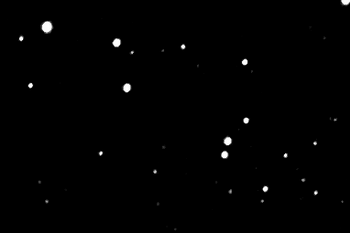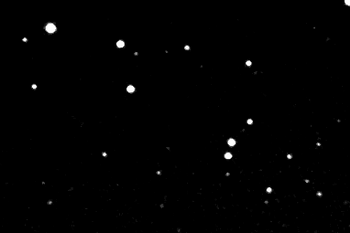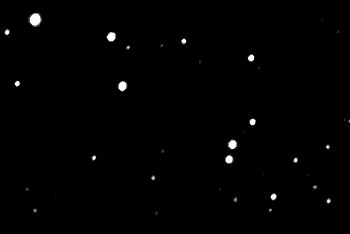

Minor planets (also known as asteroids or planetoids) are small chunks of rock orbiting the sun like our home planet or the other planets. They are not big enough to add them to the "real planets". The largest minor planet has a diameter of about 900 km (for example: the diameter of the Earth is about 12.500 km). The orbits of minor planets are mostly between the planets Mars and Jupiter.
The first minor planet was found in 1801 and is named as Ceres (1). Every minor planet gets a number and some are named. Meanwhile there are known more than 70.000 numbered minor planets. A list of all known minor planets is available here
The minor planet Tunis (6362) was found on May 19, 1979 by R.M. West at the La Silla Observatory
The diameter of Tunis (6362) is 19,77 km. The orbit is eccentrical and therefore the distance from the sun varies (approximate distances from 390.000.000 km to 560.000.000 km). Physical details and a 3D orbit visualization tool are available at the websites of the Jet Propulsion Laboratory
Because of the variable distance, the brightness of Tunis is variable too. The brightness of Tunis at the time of the pictures shown (December 18, 2003) was 16m, where m means magnitude and describes the brightness of celestial objects. A difference of 1m means, that there is a difference in brightness with a factor of 2,512. Polaris, the North Star, has a brightness of ~ 2m. Tunis as shown here is about ~ 400.000-times fainter than Polaris.
It is not easy to find a faint minor planet in pictures

|  |
The pictures were made with an 190mm/f=4 optic and a SBIG ST-8 CCD-camera. This equipment belongs to Wolfgang Mahlmann who also made the pictures. The time of integration was 4 minutes for each picture.
Picture 1 was taken at 19:06 UT while picture 2 was taken at 20:42 UT.
To find Tunis in this pictures, one method is, to bring the pictures one upon the other and than blink the pictures quickly so that only one image is visible at the same time. All stars are at the same place in both pictures, but Tunis is at two different places, so it will blink.

Wolfgang Mahlmann had another idea to locate Tunis:
If the colours red, blue and green are merging together the result is white, if the colours had the same brightness. Therefore coloured images can made with a black and white camera. One image must be taken trough a red filter, one through a green filter and one through a blue filter. Then the pictures must be merged. The result is a coloured picture (so called RGB-process). Merging the pictures can do with software like the CCDOPS-SBIG-software for CCD-cameras.
While merging three pictures which are not filtered by giving them to the software as red, green and blue filtered pictures, the result will be a picture with white stars. But Tunis, varying his position between the three picture will be seen three times, one time red, one time green and one time blue. So every moving object in a picture can be found easily. But notice that the brightness of the stars is in another relation to Tunis as in one original picture. By adding the pictures, a star-picture shows the brightness of the addition of three pictures, while (coloured) Tunis has only the brightness of one picture.

And there is another way to see Tunis: Making an animation. A gif-animator-software shows all pictures as a movie. In every picture the stars are at the same place but Tunis is moving. If every picture is shown for a short time, it looks like an animation (time-lapsed movie). In this animation, 15 pictures are included and the animation starts again after showing picture 15.

